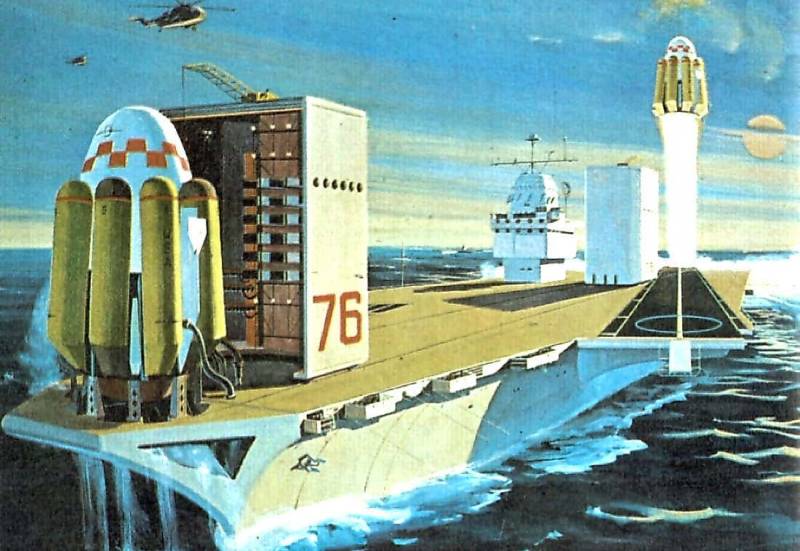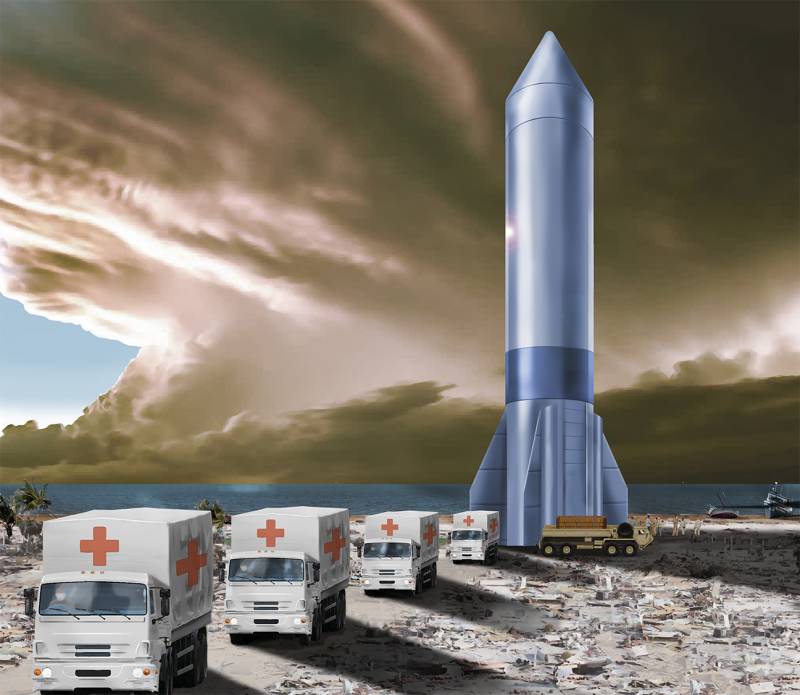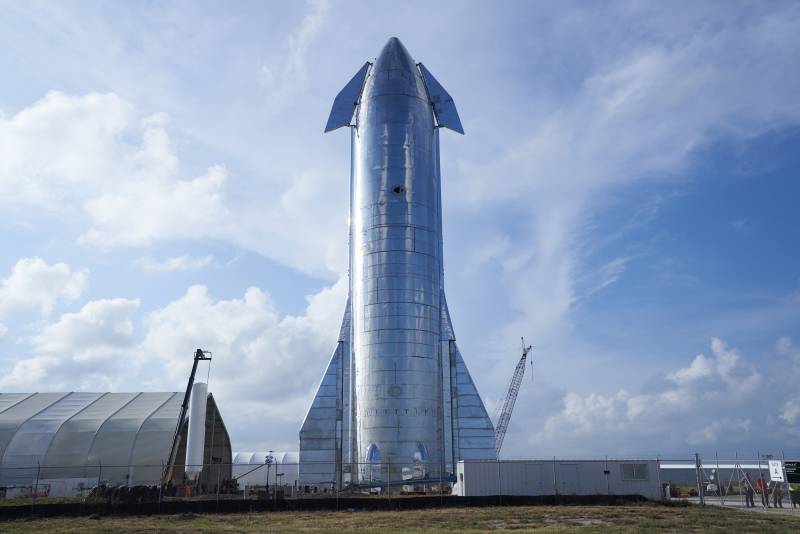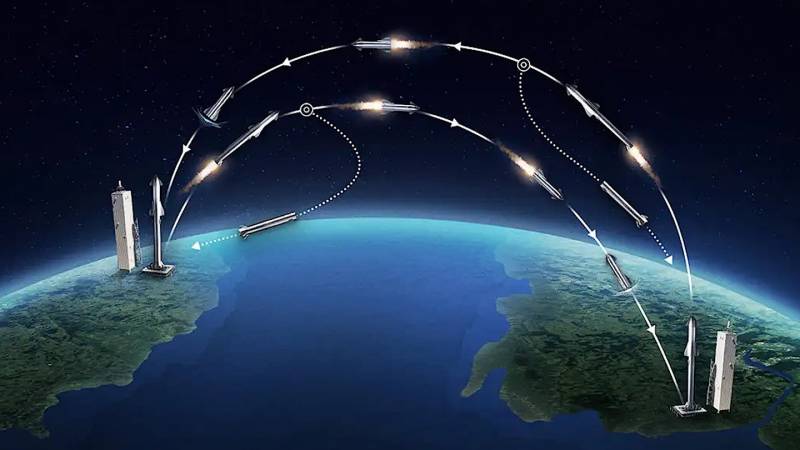US Army Missile Delivery Service
Missile Affairs Infantrymen
If ballistic missiles are capable of carrying nuclear warheads, then why can't they send Marines into enemy lines? This fair problem was attended to in the United States back in the early 60s of the last century. In 1963, the newly appointed chief of the Marine Corps, General Wallace Green, Jr., proposed to President John F. Kennedy to build a booster rocket for the army's elite special forces. In the fantasies of the military, the armed forces received an unprecedented opportunity to transfer an entire battalion of marines anywhere in the world. From the moment of landing in the rocket to landing, according to calculations, it took no more than 60 minutes. The missile transport was very good - hypersonic speed on most of the trajectory, flight at heights unattainable for air defense of that time, and the possibility of landing in strategically important areas of the USSR and China.

60 years ago, it was planned to launch missiles with marines even from aircraft carriers. Source: thedrive.com
Engineer Philip Bono of Douglas Aircraft was responsible for the practical implementation. According to his idea, 1200 fighters were loaded into a 20-storey rocket somewhere at the Vandenberg base or at Cape Canaverel and set off to conquer the world at a speed of up to 27 thousand kilometers per hour. The flight altitude of the missiles was almost 200 kilometers. Now the launch of more than a thousand living people on such a journey seems crazy, and in the 60s, some hopes could well have been pinned on such a thing. The time was like this - the war ended quite recently, a nuclear weapon, and many simply did not know what to do with it all. Look at American road train LeTourneau TC-497 and you will understand that rocket transport for the Marine Corps is quite in trend at the time.
The most interesting thing is that, despite the extreme danger of the flight itself, Philip Bono decided to choose hydrogen as a fuel. Oxygen was the oxidizing agent, and this scheme promised great energy benefits. But 1200 fighters did not promise anything good, and, frankly, it took remarkable courage to agree to such an adventure. The development engineers also provided an individual jetpack for each infantryman. There are few tens of tons of hydrogen on board, and kilograms of rocket fuel add flammable surroundings. The Pentagon also understood this when they rejected the Douglas Aircraft project, complaining about the lack of technology development. However, there was another reason for the withdrawal of the revolutionary project from the race. An object flying at a few dozen swings could well have been mistaken for a combat ballistic missile. No one will explain in advance to Moscow and Beijing that the Americans launched a transport ship with 1200 marines to help the troops in Vietnam, and not for a nuclear strike. Although even if they had warned, no one would have believed. In general, the project was closed and they promised not to return to it again.
100 tons per hour
The renaissance of the idea of Douglas Aircraft was the development of SpaceX and Virgin Orbit, which actually mastered commercial space transportation. In 2018, Air Force General Carlton Everhart was very impressed by the words of the SpaceX management about the possibility of flying around the entire globe in just half an hour. If the technology is so sophisticated and relatively budgetary, why not take advantage of it in the interests of the military? Moreover, this technique allows you to save up to 24 hours on the operational deployment of US troops anywhere in the world. Three years ago, General Everhart predicted that ground-to-ground transport missiles would appear in the army within 10 years. And, I must say, was not far from the truth. The Pentagon is asking for budget money for 2022 for Rocket Cargo, the material embodiment of the US Army's missile delivery service. By the way, money is required very small - only 50 million to renew contracts with SpaceX and Exploration Architecture Corporation. But Elon Musk already has a fully working reusable Starship rocket, and it won't take a lot of money to convert it into a military one. The carrying capacity of the device just meets the 100-ton criteria of the military. The willingness of the US Army to leave the rocket landing optional also plays a role in reducing costs. According to the new plan, if it is not possible to land a rocket, the contents of the transport compartments will simply be dropped with parachutes. The project also includes a descent cargo capsule, ejected at the desired point of the trajectory. So far, there is no talk of transferring paratroopers in this way. However, we can say with confidence that after the first successful experiments with military cargo, the turn of people will come. Moreover, jetpacks have already been tested and are actively used.
The Rocket Cargo project should not be seen as another Pentagon hoax that taxpayers will waste their money on. The program is one of the four priority areas for the development of the US Air Force until 2030. In addition to the rocket delivery service, the list includes a program for integrating artificial intelligence into Drones Skyborg, Golden Horde airborne munitions project and Navigation Technology Satellite - 3 (NTS-3). The latter is a creative rethinking of GPS, only on a new, more advanced level.
This year, a little less than 10 million was spent on the project of a cargo delivery rocket, and it is obvious that a breakthrough happened somewhere. Now the Rocket Cargo program has been raised to the rank of priority and since September 2021 (in the USA the financial year starts on the day of knowledge) they ask for five times more. The project is considering the possibility of a preliminary delivery of cargoes to a near-earth orbit. Here they will be in standby mode until the arrival of the Starship truck, which will receive its 100 tons of cargo and set off to the target. This will significantly reduce the starting fuel supply on the rocket - there is no need to lift a multi-ton load from the planet's surface. True, in any case, you will initially have to spend money on lifting cargo to the orbital warehouse.
Mask at gunpoint
It's funny how Americans advertise the possibilities of the future system. The illustrations show the Starship reusable rockets ... delivering humanitarian supplies and medical supplies! The mission, of course, is good, but absolutely false - where and at what point in the world can we urgently need 100 tons of food and medicine? Can't wait 18-20 hours until a pair of C-17s arrive?

The American military, it turns out, also has "girl designers." The convoy of trucks looks suspiciously like Russian KamAZ trucks. Or is it a hint? Source: afresearchlab.com
By the way, about the S-17, or rather, about all transport aircraft. On average, the transfer of several tens of tons of cargo to the other end of the world costs about 500 thousand dollars, and the launch of Starship - 2 million. This is in the future and according to the most modest estimates of Elon Musk. All other rockets that can land on your ass are tens of times more expensive. Is 17-19 hours of gained time worth the transfer of multimillion-dollar losses for taxpayers? The question is rhetorical, but it is not one. The problem is again with the anti-missile systems of Russia and China. First, there is no guarantee that a Starship's flight on a ballistic trajectory will not be perceived as the beginning of a nuclear war. If a "transport" Starship chartered by the Pentagon is flying over Russia in space, what to do with it? According to the official legend, he transfers cargo through the North Pole somewhere to Israel or Pakistan. Secondly, there is no guarantee that the Americans will not equip Musk's missiles with nuclear warheads and secretly strike Moscow and Beijing with them. Still, 100 tons of payload is a solid potential for placing a nuclear warhead. The very idea of militarizing Starship makes these launch vehicles potential targets for a preemptive strike by the Russian Aerospace Forces.


Information